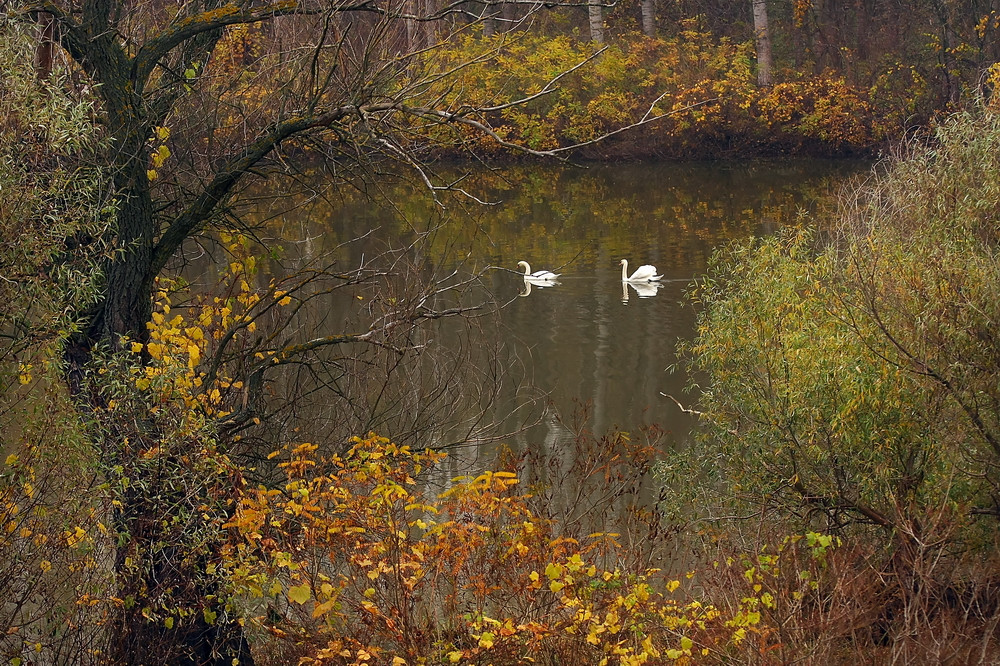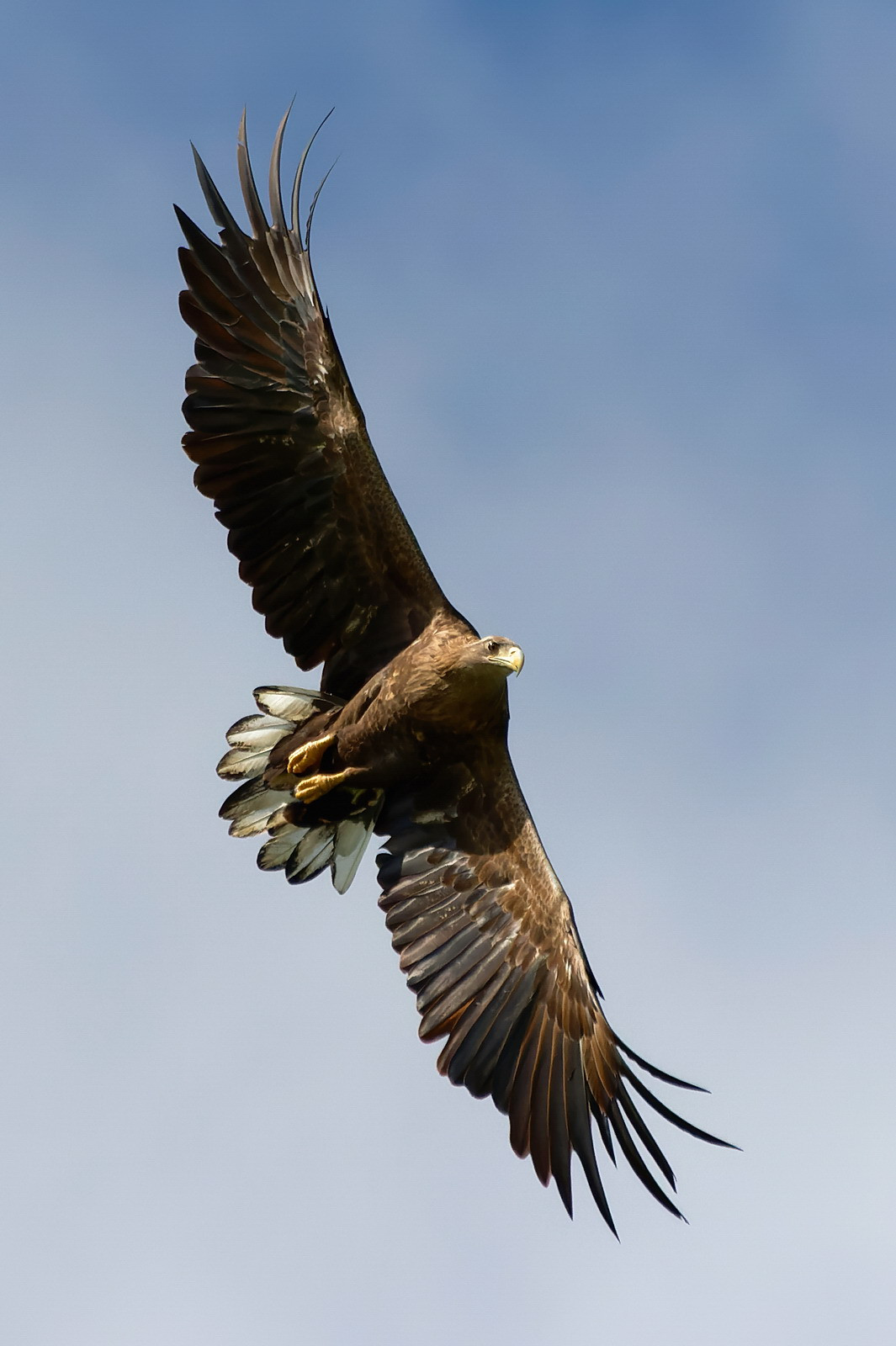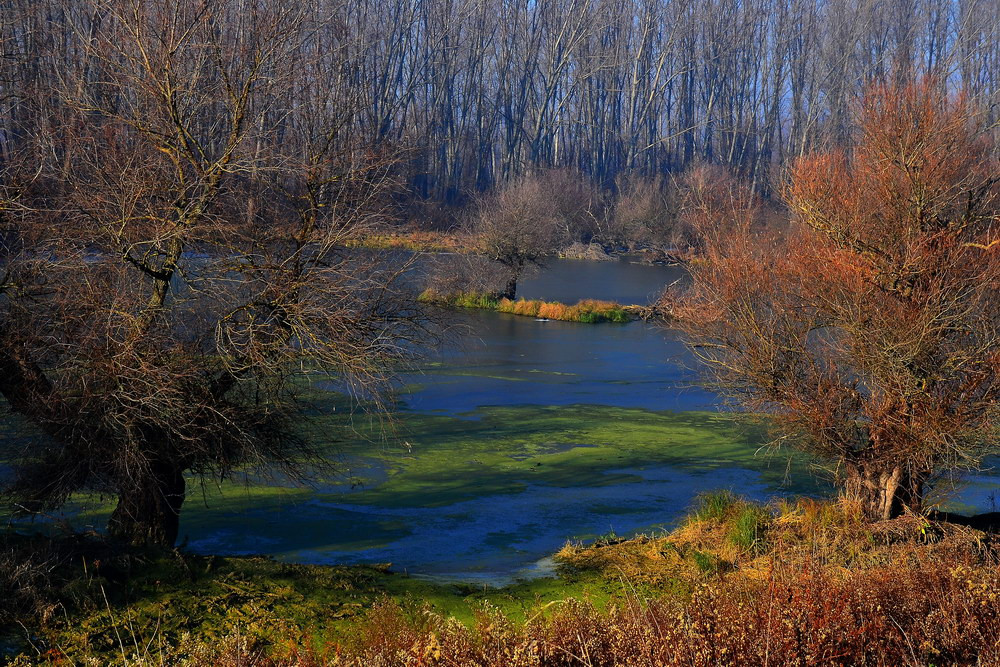Charger images
Les formats d'image autorisés sont de type jpeg, png ou gif
La taille maximale du fichier doit être de 20MB



The floodplains of Beljarica, north of the Pupin’s Bridge, are the home of the very best birding in Belgrade.
Located between the River Danube and the levee, Beljarica (Beh-LYAH-ritza) is a spacious flood retention basin of Belgrade, 2.1 km at its widest point and some 9 km2 of seasonally inundated riparian forests of willow and poplar, with stands of oak and ash, yet largely under industrial black poplar plantations, river arms and ponds. 60 mammal (Eurasian Beaver, Eurasian Otter, Wild Boar, Roe Deer, Wildcat, Pine Marten, Golden Jackal) and 200 bird species (over 170 strictly protected) were recorded here. Among them are breeding Cigogne noires and no less than 3 pairs of Pygargue à queue blanches.
Spring waterbirds at Beljarica include passing Sarcelle d'étés (March), Échasse blanche, Chevalier sylvain, Combattant varié, Bécasseau variable, and arriving Fuligule nyroca, Bihoreau gris, Crabier chevelu and the Guifette moustac. The first ever Garrot à oeil d'ors fledged in Serbia were recorded here in 2024, and again in 2025. Martin-pêcheur d'Europe, Huppe fasciée and the Guêpier d'Europe come from their nesting holes at the high loess-bluff of the opposite, right bank of the river. Pic noir is characteristic of the area. Also, breeding Pie-grièche écorcheur, Rémiz penduline, Hypolaïs ictérine, Hypolaïs pâle, together with uncommon Rousserolle verderolle, certainly deserve a mention.
Summer migration brings waders, such as Chevalier sylvain, Échasse blanche, Petit Gravelot, Bécasseau variable, Bécasseau minute, Chevalier gambette, sometimes Chevalier arlequin, Grand Gravelot, Bécasseau falcinelle, Bécasseau de Temminck. With some luck, in July it becomes possible to spot over a dozen young Brown Hares, and a few Golden Jackals, too. In August, flocks of up to 80 Cigogne noires are showing up. Gobemouche gris, Gobemouche à collier, Fauvette babillarde, Pouillot siffleur and Pouillot fitis are the most visible during their mid-August to early October migration.
In October, birds like Busard Saint-Martin, Pie-grièche grise, Roitelet huppé, Troglodyte mignon, Pipit farlouse, Pipit spioncelle, Pinson du Nord, Bruant des roseaux, start appearing. In winter months, there would be numerous Grande Aigrettes, ducks and both cormorants, together with half a dozen to a dozen Pygargue à queue blanches.
PROTECTION STATUS: Beljarica is a part of the international ecological corridor along the Danube River, the “Confluence of the Sava and the Danube Rivers” Important Bird Area (IBA) and, from August 2022, part of the new, backwaters nature reserve "Foreland of the Left Bank of the Danube near Belgrade", also known as the Belgrade Amazonia.
Drone photo by VICE.
The earlier in the morning, the better. You will have the sun behind you and the birds will be more active. Avoid afternoons because the sun is in your eyes and the birds are in the backlight.
The easiest access is by car from the Zrenjanin Road, through Kovilovo suburb, which is also reachable by public bus No. 106, yet the bus stop is 4.5 km from the levee. Zoom in on the map and click on the "P" (parking) sign for driving directions.
If you reach Beljarica by car, keep in mind that driving along the levee is prohibited and the barrier is often closed and locked (even when it is open, you could damage your vehicle as there are cavernous pot-holes). Park at the beginning of the route, but at the side – be sure not to block heavy lorries full of poplar trunks.
The other option is from the Belgrade suburb of Zemun, on foot across the Pupin’s Bridge and then downstairs onto the dyke. Continue north.
Be boar aware and please follow the levee birding route (about 6 km). It is definitely not recommended to enter the basin itself, as wild sows with piglets can behave aggressively, and it is flooded in huge areas anyways.
The mosquitoes potentially could be a problem; be prepared.
“Foreland of the Left Bank of the Danube near Belgrade, in addition to Gornje Podunavlje Reserve and Koviljsko-petrovaradinski rit Reserve, is one of the largest flood zones in the entire Serbia, which clearly outlines the importance of this area regarding the protection of its natural phenomena and natural values.” (Institute for Nature Conservation of Serbia)
The initiative to protect this area was launched in 2010 by the local NGO League for Ornithological Action (LOA). Belgrade City Environmental Secretariat accepted the initiative and the Institute for the Protection of Nature of Serbia produced the study and the official proposal for the protection of 18.6 sq km / 7.2 sq mi of the Danube Backwaters in 2014.
In August 2016, the newly planned Chinese Belt and Road harbour development inside the most valuable 9 sq km / 3.5 sq mi of the proposed reserve (Beljarica itself) was confirmed. Worried for the future of the backwaters, LOA launched the Save the “Belgrade Amazon” campaign, with a video clip, an online petition, lectures, public protests, media appearances, an award winning 40 minutes documentary (by VICE), etc. In March 2020, the Ministry of Construction and Traffic stated: “No, we gave up on the Beljarica locality, the harbour will be built somewhere farther upstream.”
And, 12 years later, in August 2022 Beljarica and the wider Danube Backwaters finally became officially protected: based on Article 42, Paragraph 8 of the Law on Nature Protection ("Official Gazette of the RS", No. 36/09, 88/10, 91/10-amendment, 14/16, 95/18-other law and 71/21) The Ministry of Environmental Protection informed the public about the procedure for initiating the protection of the natural area of the I (first) category, as an Area of Exceptional Characteristics "Foreland of the Left Bank of the Danube near Belgrade" [which includes Beljarica].
Still, Beljarica and the wider Danube Backwaters are potentially threatened by the state officials’ construction plans for the "Serbian - Chinese Industrial Park Mihajlo Pupin" right across the levee (E and SE of Beljarica).
Votre feedback sera transmis à l’auteur.rice de cette zone et à l’équipe éditoriale de Birdingplaces, qui l’utiliseront pour améliorer la qualité des informations. (Vous souhaitez publier un commentaire visible en bas de page ? Fermez cette fenêtre et choisissez l’Option 1 : « Publier un commentaire, un conseil ou une observation ».)
Veuillez fournir des suggestions d'améliorations ou d'ajouts au texte de ce site ornithologique.
Veuillez fournir vos suggestions d'améliorations ou d'ajouts à la carte.
Veuillez fournir des suggestions d'améliorations ou d'ajouts à la liste des oiseaux.
Cliquez sur l'icône de l'oiseau () Insérez les noms d'oiseau dans votre langue. Ils seront automatiquement traduits pour les autres usagers !